A few words about the cemetery customs of Bolivians
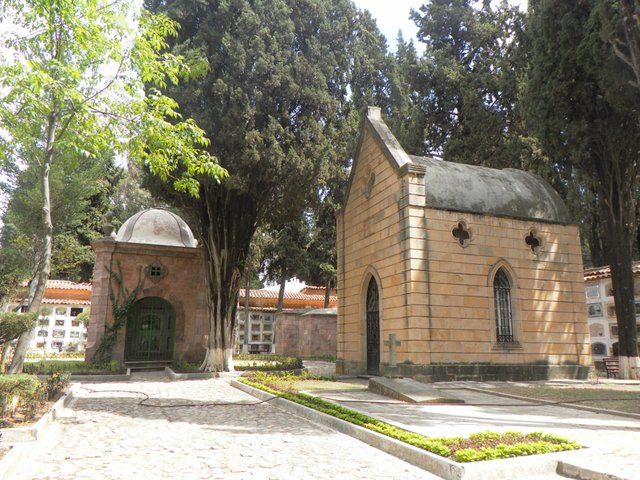
Bolivia is a country where more than half of the population are representatives of two aboriginal groups: Quechua and Aymara. Although 75% of the inhabitants consider themselves Catholics (the second-highest percentage in South America after Paraguay, 89%), in fact, the Catholic faith is very closely related to indigenous beliefs, which is clearly visible when we go to the cemetery.
The tombstones reflect the social status of the deceased, generally divided into three types: those situated on the walls, for the poorest, standard ones, in the ground for the middle class, and large mausoleums for the richest.
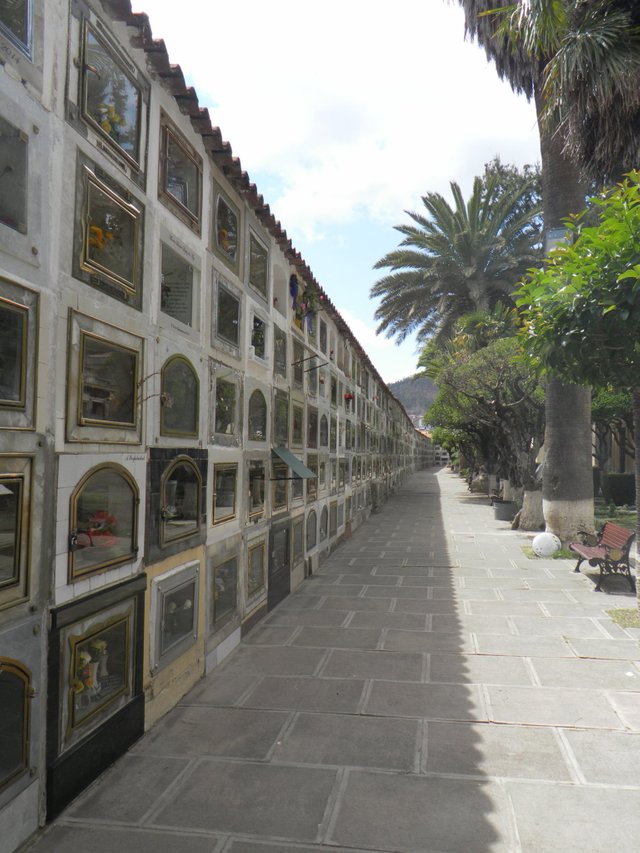
As you stroll between them, you can hear loud exhortations from older people who offer prayers for the dead for a small fee. Prices vary. As the deceased was poor during his lifetime and he was buried "on the wall", 5 Bolivians (1,5 STEEM) are enough, for a grave in the ground the cost of prayer is twice as much, and the price for praying for the deceased from the mausoleum is 20 Bolivians (5,5 STEEM). Whether it is about equal opportunities in accessing the service, or rather, the richer ones have more sins and require more intense prayers, this can only be guessed at.
After paying the fee, busy people may leave with the conviction that the obligation to care for the ancestors has been fulfilled, and those with more time may sit on a bench next to a service provider (usually an elderly person, often disabled) and listen to a monotonous appeal to every saint, spoken hastily and loudly towards heaven.

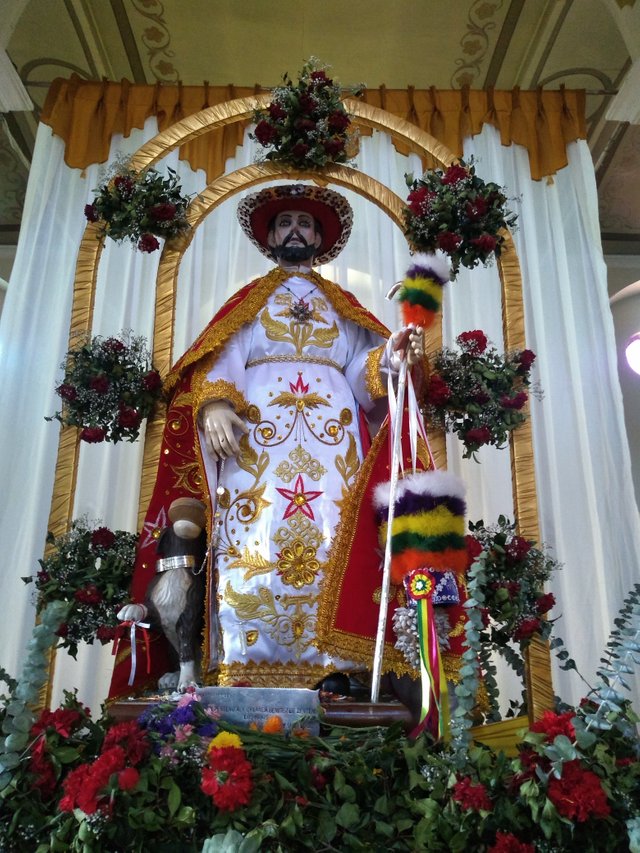
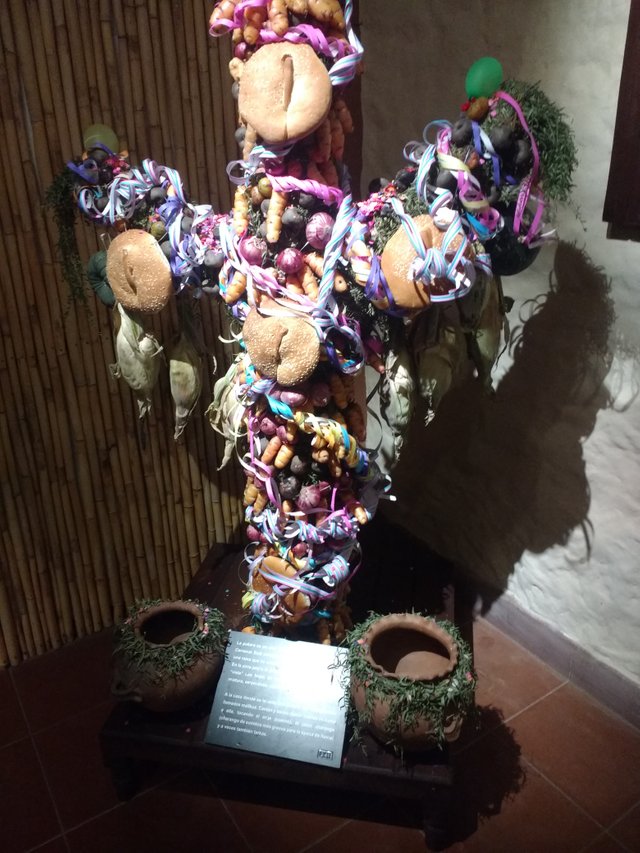

After such a habit, all that remains is to decorate the tombstone. In addition to the usual flowers, well known in the cemeteries in my culture as well, it is necessary to prepare a drink for the deceased. Usually, a glass of water is put up, though the cemetery is also full of miniature bottles of Pepsi, Coca-Cola, and in some cases whiskey, spirits, or beers. When visiting the deceased, you can drink with him, and the last sip should be poured on the ground as a gift to Pachamama, Mother Goddess of the Earth.
In addition to flowers and drinks, tombstones are often decorated with statues of saints (Mary even more often than Jesus, as she also represents native Pachamama goddess), photos of the dead, as well as their personal belongings, or figurines/objects referring to their work or hobbies. We saw toothbrushes, combs, figurines of motorcycles and cars in the cemetery, and at children's tombstones, we saw favorite toys and drawings depicting cartoon characters. However, there are no candles that I knew from Europe.

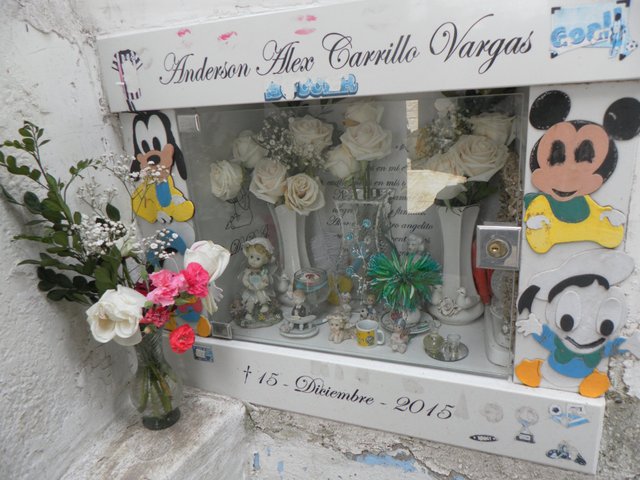 Toys, porcelain figurines and painted cartoon characters on the kid's grave. In most cases there are also personalized messages written on the wall
Toys, porcelain figurines and painted cartoon characters on the kid's grave. In most cases there are also personalized messages written on the wall 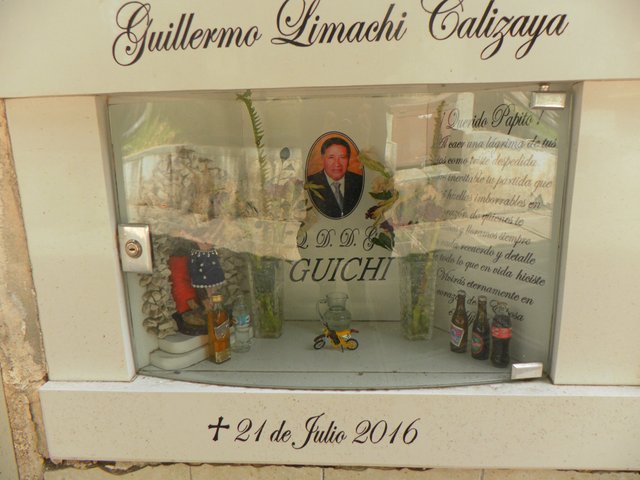 Besides flower and water that man received for his trip to the paradise small whiskey, coca-cola and figurine of motorbike, that probably represent his passion to the motorcycles during the lifetime.
Besides flower and water that man received for his trip to the paradise small whiskey, coca-cola and figurine of motorbike, that probably represent his passion to the motorcycles during the lifetime. 
Cemeteries also function as parks. Many people sit on a bench with their favorite book among the trees and rest in a pleasantly cool shade, wrapped in the monotonous sound of prayers and the chirping of birds, with their loved ones who have passed away.

Muy buena publicación. Las costumbres de los bolivianos con respecto a colocar flores y bebidas son parecidas a las venezolanas y hay personas que hasta entierran al difunto con música.
Downvoting a post can decrease pending rewards and make it less visible. Common reasons:
Submit
Hey,
Thank you very much for sharing your post in Steem-Travelers. We enjoyed reading it a lot :)
Downvoting a post can decrease pending rewards and make it less visible. Common reasons:
Submit
Interesante lo de las tumbas y las diferntes tarifas según la clase social del difunto. Que bueno conocer un poco de dichas costumbres. Gracias por compartirlas.
#travelers-say
Downvoting a post can decrease pending rewards and make it less visible. Common reasons:
Submit
Greetings!
Thank you for sharing those words about cemetery customs of bolivians. It felt like I traveled in there with how you wrote it and with the help of the photos you shared. Also thank you for the new customs I learned today.
#travelers-say
Downvoting a post can decrease pending rewards and make it less visible. Common reasons:
Submit
Hola! Muy interesante post. Siempre es bueno conocer sobre las costumbres de otros paises. Felicidades. 😃
Downvoting a post can decrease pending rewards and make it less visible. Common reasons:
Submit
interesting discussion.. just like the graves and traditions in Korea that I watched in the drama that there are drinks and food in the graves. and the beauty of the grave in accordance with the wealth that is owned. pity for those who do not have enough money.
#travelers-say
Downvoting a post can decrease pending rewards and make it less visible. Common reasons:
Submit
Have a great day. Your trip was so beautiful. Thank you for sharing such a beautiful post with us.
#Travelers-say
Downvoting a post can decrease pending rewards and make it less visible. Common reasons:
Submit